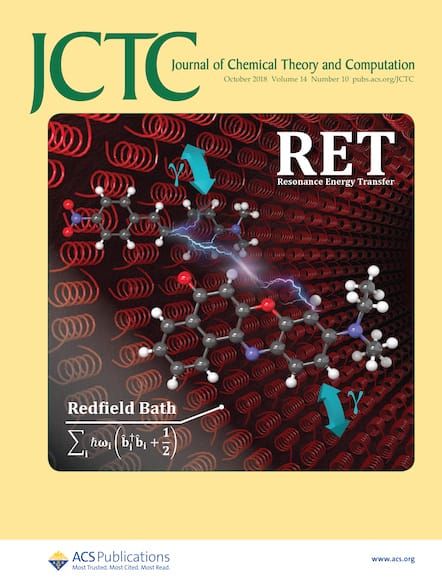主动学习FEP:对AL协议性能和化学多样性的影响。
IF 5.7
1区 化学
Q2 CHEMISTRY, PHYSICAL
引用次数: 0
摘要
基于自由能摄动(AL-FEP)结合效价预测的主动学习模型已被提出,作为一种生成机器学习模型的方法,该模型能够预测早期先导物优化的生化效价,在有限的测量数据可用的情况下。AL-FEP在这里描述了在历史上GSK项目中开发的不同溴域抑制剂系列的两种应用:一种是保持核心不变,另一种是将核心变化包含在化合物思想池中。测量的生化效能数据已被用于评估最终模型的性能,并证明在几轮主动学习中可以生成性能良好的模型,特别是当核心保持不变时。为了将该方法常规应用于药物发现项目,对AL-FEP工作流程进行了回顾性评估,包括化合物选择策略、探索-开发比率和每个周期选择的化合物数量等参数。在模型富集和R2方面观察到显著的性能差异并进行了合理化。对于AL-FEP何时应采用具体参数提出了建议,这取决于部署最终模型的背景(最大限度地提高效力或广泛的预测准确性)。本文章由计算机程序翻译,如有差异,请以英文原文为准。
Active Learning FEP: Impact on Performance of AL Protocol and Chemical Diversity.
Active learning using models built on binding potency predictions from free energy perturbation (AL-FEP) has been proposed as a method for generating machine learning models capable of predicting biochemical potency for early-stage lead optimization where limited measured data are available. Two applications of AL-FEP are described here for different bromodomain inhibitor series that were developed in historic GSK projects: one where the core is kept constant and the other where core changes are included in the pool of compound ideas. Measured biochemical potency data have been used to assess the performance of the final models and demonstrate that well-performing models can be generated within several rounds of active learning, especially when the core is kept constant. To apply this method routinely to drug discovery projects, a retrospective evaluation of the AL-FEP workflow has been conducted covering parameters including the compound selection strategy, explore-exploit ratios, and number of compounds selected per cycle. Significant differences in performance in terms of model enrichment and R2 are observed and rationalized. Recommendations are made as to when specific parameters should be employed for AL-FEP depending on the context (maximizing potency or broad-range prediction accuracy) in which the final model is to be deployed.
求助全文
通过发布文献求助,成功后即可免费获取论文全文。
去求助
来源期刊

Journal of Chemical Theory and Computation
化学-物理:原子、分子和化学物理
CiteScore
9.90
自引率
16.40%
发文量
568
审稿时长
1 months
期刊介绍:
The Journal of Chemical Theory and Computation invites new and original contributions with the understanding that, if accepted, they will not be published elsewhere. Papers reporting new theories, methodology, and/or important applications in quantum electronic structure, molecular dynamics, and statistical mechanics are appropriate for submission to this Journal. Specific topics include advances in or applications of ab initio quantum mechanics, density functional theory, design and properties of new materials, surface science, Monte Carlo simulations, solvation models, QM/MM calculations, biomolecular structure prediction, and molecular dynamics in the broadest sense including gas-phase dynamics, ab initio dynamics, biomolecular dynamics, and protein folding. The Journal does not consider papers that are straightforward applications of known methods including DFT and molecular dynamics. The Journal favors submissions that include advances in theory or methodology with applications to compelling problems.
 求助内容:
求助内容: 应助结果提醒方式:
应助结果提醒方式:


